How To Form Relative Pronouns In Spanish
Relative pronouns connect phrases to a noun or pronoun. Learn this and more with a helpful guide.
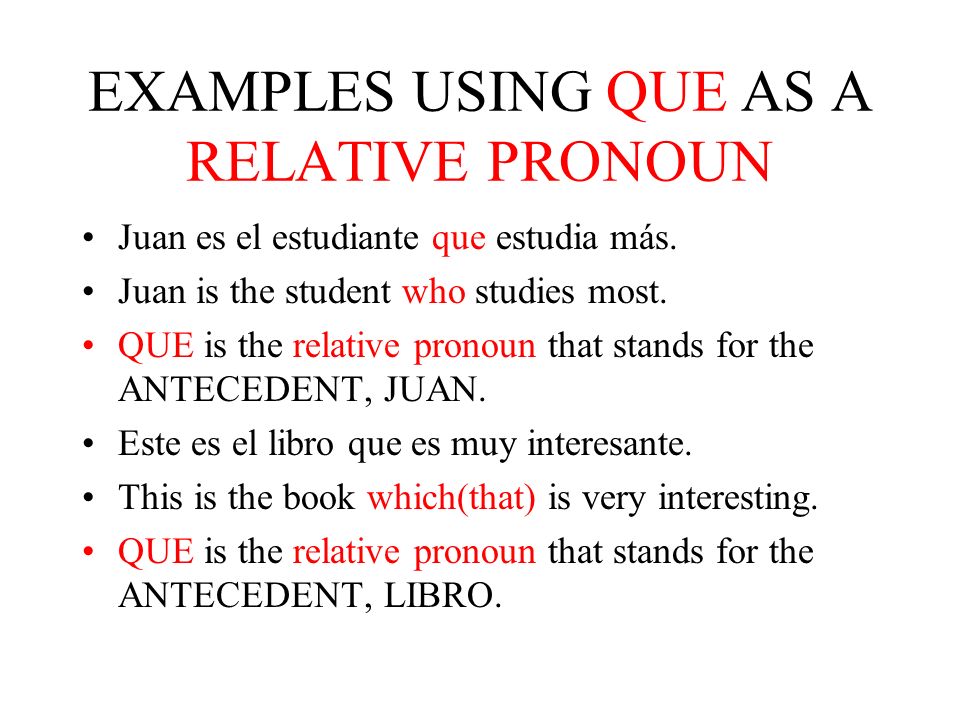
Used As A Relative Pronoun Ppt Download
But for now you are only going to learn the subject pronouns the other types correspond to different more advanced lessons.

How to form relative pronouns in spanish. An example of the plural form of the interrogative pronoun used in. Because relative pronouns often act as triggers and can help you identify where and when to use present subjunctive Spanish. A relative pronoun is one that introduces an adjective clause also called a relative clause.
Unlike traditional reference grammars each topic is explained using authentic video examples. When the relative pronoun refers to an abstract idea use lo que Lo que quieres no. When en is used with avoir and il y a or with numbers it is often not translated in English but can never be missed out in French.
Like French and other languages with the TV distinction modern Spanish has a distinction in. Both affirmative and negative commands in Spanish are most often in the second person informal tú vosotros. We use them to address a friend peer relative child coworker classmate or another individual in a casual setting.
These are not commonly used in everyday conversation and are generally reserved for written Spanish or formal oratory. To make sure that you understand the correct answers our answer keys offer simple explanations as well as handy tips and tricks. Pronouns carry the same number and gender as the noun they replace.
Note that this is an example of a non-restrictive clause. Online exercises to improve your Spanish. The relative pronouns are that which who whom and whose An adjective clause sits after a noun to identify it or tell us some information about it.
In singular in Spanish it is Un or Una - un niño una niña. In standard English some singular third-person pronouns are he and she which are usually seen as gender-specific pronouns referring to a man and a woman respectivelyA gender-neutral pronoun or gender-inclusive pronoun is one that gives no implications about gender and could be used for. The Imperative in Spanish is a verb form that is used to give an order to someone to make a suggestion to do something to provide recommendations offer advice prohibit actions or make a request.
A word that is used instead of a noun or a noun phrase. Several pronouns further have special forms used after prepositionsSpanish is a pro-drop language with respect to subject pronouns. They can help connect two sentences or.
IXL brings learning to life with over 200 different grammar skills. Possessive pronouns mixed. These examples come from the Spanish in Texas project which profiles Spanish as it is spoken throughout Texas today.
PRONOMBRES pronouns Pronouns are words we use to replace nouns. Engaging questions and fun visuals motivate students to master new concepts. En can also replace the partitive article.
Cuyo cuya cuyos cuyas. Commands exist most often in the informal or familiar tú form. Like the direct object pronouns indirect object pronouns come before the verb too.
Spanish Grammar in Context is a unique website that provides detailed grammar explanations and examples of the Spanish language with accompanying practice questions. Pass me the salt. Note that there are four forms to accomodate singular and plural masculine and feminine.
The indefinite plural in Spanish is Unos or Unas - unos niños unas niñas. In French the relative pronouns are qui que lequel auquel and duquel. El cual la cual los cuales las cuales.
There are various forms of the imperative in Spanish that use - tú nosotros usted ustedes. Relative pronouns can also introduce further information about someone or something for example Peter who is a brilliant painter wants to study art. Learn everything you need to know with this guide.
Personal pronouns in Spanish have distinct forms according to whether they stand for a subject a direct object an indirect object or a reflexive object. It describes modifies the first three languages mentioned. Pronouns are a part of language used to refer to someone or something without using proper nouns.
Y is used with verbs and expressions normally followed by à to avoid repeating the same word. Someones pronouns are the way they. En is used with verbs and expressions normally followed by de to avoid repeating the same word.
We include the relative adjective cuyo and its related forms in this discussion because it relates the owner to that which is owned as does the English whose. German pronouns are German words that function as pronounsAs with pronouns in other languages they are frequently employed as the subject or object of a clause acting as substitutes for nouns or noun phrases but are also used in relative clauses to relate the main clause to a subordinate one. Although they look very similar to the Spanish interrogative pronouns Qué Cuándo Dónde Quién there is also a subtle difference in appearance and the meaning and function are different.
Another set of relative pronouns can be used in place of el que la que los que and las que. Most often they are connecting words or technically speaking relative pronouns translated to mean which or that They can stand for either feminine or masculine objects as well as ideas or concepts. Click here to learn more about Nouns and Articles in Spanish.
Learn about prepositional pronouns in Spanish Spanish pronouns and pronouns as objects of prepositions in Spanish in this article. Relative pronouns - English Grammar Today - a reference to written and spoken English grammar and usage - Cambridge Dictionary. Our online exercises for Spanish help you to learn and practice grammar rules in an interactive manner.
Possessive Pronouns Free Exercise. For example the first set of examples in each of the pairs below show individual sentences while the second set shows the previous sentences joined by a relative pronoun to form a single sentence. A relative pronoun is used to connect a clause or phrase to a noun or pronoun.
Janes house which was built in 1890 needs a lot of repairs. This is a correct usage of an adjective clause. Theyre words like who which that where and when.
When it comes to types of pronouns you should be familiar with what they look like and how theyre used. But how do you use them. Italian French and Spanish which are all Romance languages all come from Latin.
Relative pronouns are often used to connect sentences or phrases. Learn About Spanish Interrogative Pronouns ThoughtCo Aug.

Relative Pronoun Activities Relative Pronouns Anchor Charts Pronoun Task Cards

Spanish Relative Pronouns Video Lesson Transcript Study Com

Relative Pronouns Spanish Fill In The Blanks Exam With Ak As Amped Up Learning
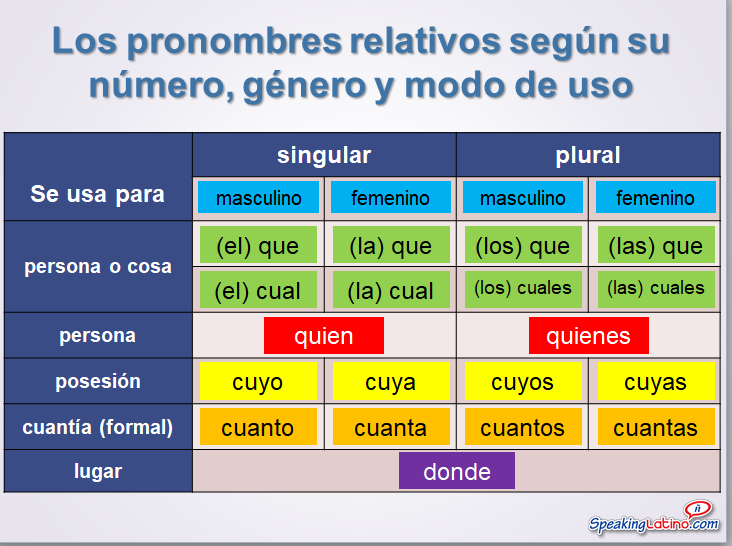
Relative Pronouns Spanish Class Activities

Spanish Relative Pronouns Rocket Languages

Spanish Relative Pronouns Rocket Languages

How To Use Relative Pronouns In Spanish The Easy Way Tips And Tricks
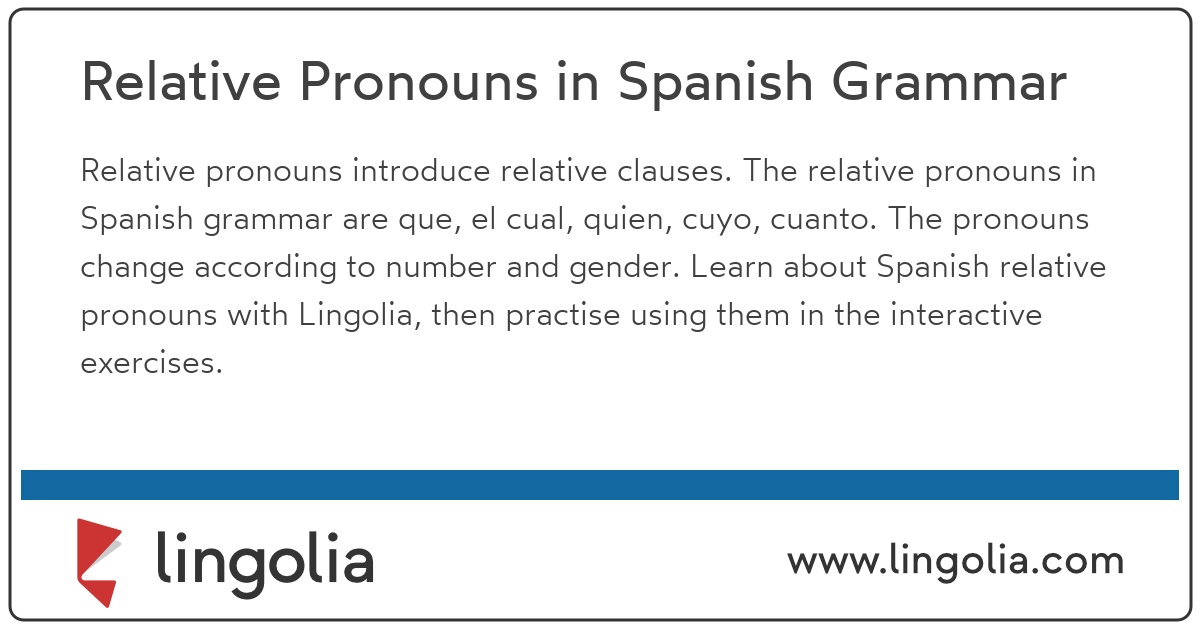
Relative Pronouns In Spanish Grammar
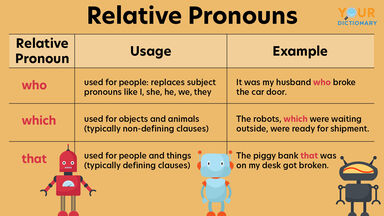
Relative Pronouns And How To Use Them
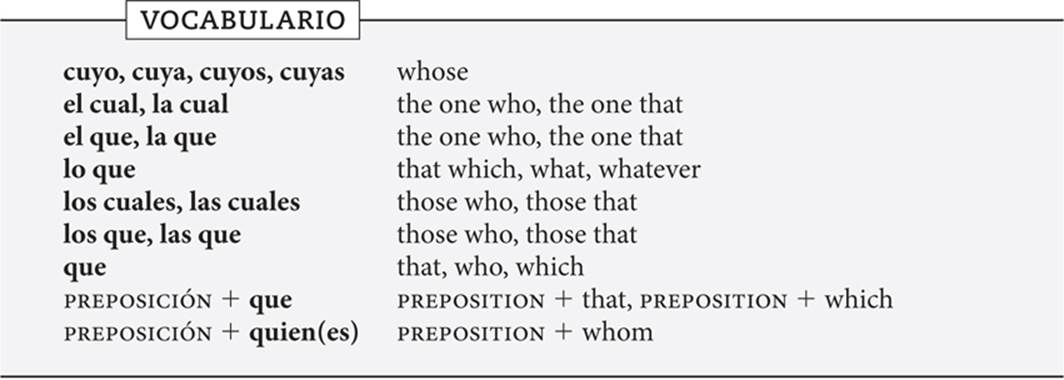
Relative Pronouns Pronouns Spanish Pronouns And Prepositions Practice Makes Perfect

7 Spanish Relative Pronouns That You Ve Gotta Stop Hiding From Fluentu Spanish
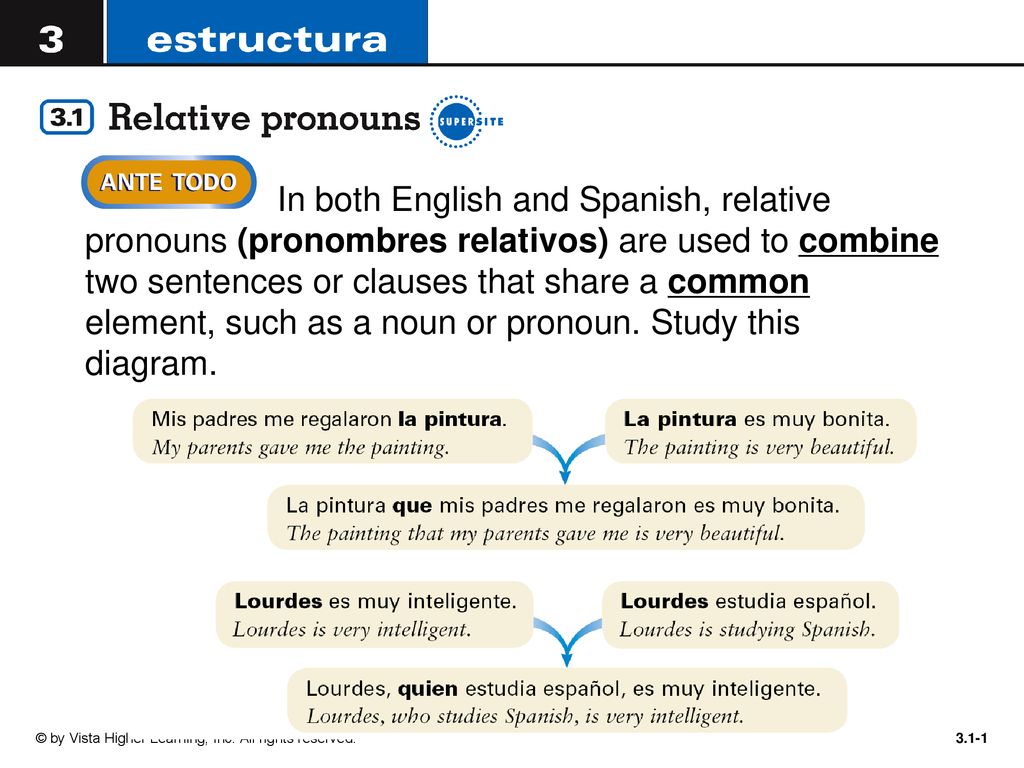
In Both English And Spanish Relative Pronouns Pronombres Relativos Are Used To Combine Two Sentences Or Clauses That Share A Common Element Such As Ppt Download

English Grammar Updates Relative Pronouns

Spanish Relative Pronouns Rocket Languages

Spanish Relative Pronouns Rocket Languages

Spanish Relative Pronouns Rocket Languages

Relative Pronoun Definition List And Examples Of Relative Pronouns 7esl Relative Pronouns Learn English Relative Clauses

Relative Pronouns In Spanish Using Que Quien Quienes Etc In Relative Clauses Youtube

Relative Pronouns Spanish Three Honors C 12 Definition